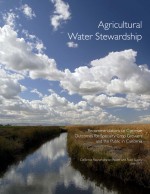Growers in the U.S. should be paying attention to what’s happening in Europe, said Mosbah Kushad, an associate professor in the Crop Sciences Department at the University of Illinois. Laboratory analysis of the bacteria showed that it is a new strain referred to as E. coli O-104, possibly with an acquired ability to infect large numbers of people. The WHO and scientists at the Beijing Genomics Institute have said that the new strain “has never been seen in an outbreak situation before” and that it is “highly infectious and toxic.”
The familiar E. coli O157 H7 was first discovered in California in the mid 1980s when a women ate an insufficiently cooked hamburger from a fast food restaurant. Since then, this bacterium has caused millions of infection and hundreds of fatalities around the world, with billions of dollars in economic losses. If this European variant is new and can cause large numbers of infections, as has been suggested, Kushad says it will have a huge impact on food industries worldwide. E. coli travels very fast in contaminated foods, especially raw foods such as fruits and vegetables, because it can be killed only by heat and chemical treatment. With food commerce being more global than ever before, it is expected that the new strain may reach the U.S. within a few months, he added.
This new discovery highlights the need for everyone in the produce industry to be more vigilant about food safety and good agricultural practices, says Kushad, who advised growers that it is not too late for this season to evaluate their operations and to look at where they can improve food safety. Here are a few areas that may be of concern, according to Kushad.
1. Water and water sources. It is highly recommended that you send samples for analysis at the beginning of the growing season, in the middle, and at the end. Have the samples evaluated for total coliform, fecal coliform, and E. coli. Run the analysis even if you use city water, and remember that you cannot use surface or pond water to wash produce unless it has been properly cleaned and tested. Chlorinate well water if needed, and use the information below in the equipment sanitation section.
2. Worker hygiene. Workers need to be trained on how to follow good agricultural practices. They need to wash their hands with soap (anti-bacterial soap works best; or use unscented soap) and potable water and dry their hands with disposable paper towels. Train workers to lather their hands, their nails, and between their fingers for at least 15 seconds; they must wash their hands every time they leave their work place, even if they did not go the restroom. Also make sure that there is adequate signage in the washing area in the language that the workers can read and understand.
3. Equipment sanitation. Wash equipment at the end of each work day with a chlorine solution or other sanitizers followed by water only to prevent rust formation. To sanitize equipment, you may use hot water first, then wash with a 200 ppm chlorine solution. For fruits and vegetables, use 50 to 100 ppm chlorine solution followed by potable water wash. Make sure to check water pH and water temperature. Chlorine works best at pH lower than 7.4 because chlorine forms mostly hypochlorous acid at low pH and hypochlorite ions at high pH above 7.8. Hypochlorous acid is the more effective sanitizer, whereas the ions are more oxidizers. Also, high organic matter reduces chlorine concentration, so check the level of chlorine every two to four hours, depending on the crop you want to sanitize. Temperature also affects chlorine levels in solution. High temperatures increase chlorine volatility, so your water temperature should be around 50 to 55F for better chlorine effectiveness and for keeping the produce relatively cool.
4. There are many other areas in your operation that may need attention, such as compost, grazing animals, your neighbors’ raw sludge runoff, or other factors that may affect the safety of the produce you grow.
“Remember,” Kushad concludes, “an ounce of prevention is better than a pound of cure.”
For more information on lesser known e. coli types, click here.










